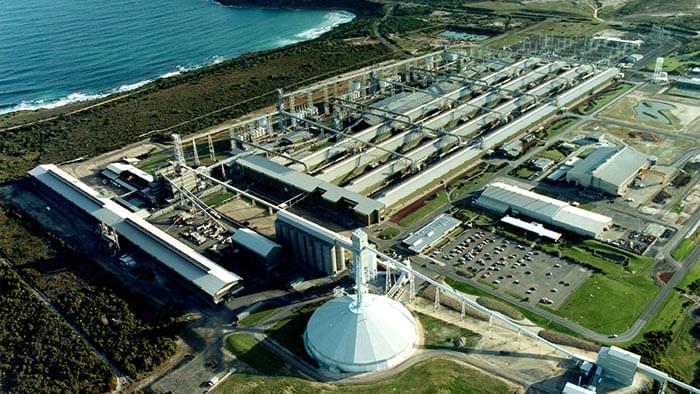Following last week’s surprise update, Google is back again with the December Feature Drop for Pixel owners. This time around, Google is bringing some Pixel 6-exclusive features to Pixel 4a 5G “or newer” Pixel devices. https://youtu.be/FmznwhHlCP8 These include the all-new Quick Tap to Snap, making it possible for you to quickly access and send Snaps through Snapchat right from the Lock Screen. Going along with the Quick Tap to Snap functionality, Google has introduced an all-new Pixel-exclusive lens called “Pixel Face”. The company claims that “more Pixel-exclusive Lenses” will arrive in future Feature Drops. In addition to the Feature Drop, this update includes the December Android Security Patch, and includes the following versions for these devices: Pixel 3a (XL): SQ1A.211205.008 Pixel 4 (XL): SQ1A.211205.008 Pixel 4a: SQ1A.211205.008 Pixel 4a (5G): SQ1A.211205.008 Pixel 5: SQ1A.211205.008 Pixel 5a (5G): SQ1A.211205.008 Owners of the Pixel 6 and 6 Pro will begin receiving their December updates “next week”. With last week’s update, Google announced compatibility with the Pixel 6 and 6 Pro to enable a digital car key with select BMW models. After being set up, you can simply place your Pixel on the key reader and press the engine start button. But now, Google is activating the Ultra-Wideband chip found in the Pixel 6 Pro to improve functionality. Not only will this make it easier to use your Pixel 6 Pro as a digital car key, but Google also states this will offer improved Nearby Share compatibility. Another new feature arriving for Pixel devices comes via the Sound Amplifier app. With this Feature Drop, Google is adding a new “Conversation Mode” to Pixel devices. This uses on-device Machine Learning to “help anyone who has a hard time hearing in loud environments by tuning out competing noise.” It works by pointing your phone at the person you want to have a conversation with, pinning the person, and then being able to actually enjoy hearing what they have to say. Google states this is a “sneak peek” version of the feature, but we could end up seeing it arrive for more devices in the future. Now Playing is getting an updated experience, as you’ll not only be able to identify the song with your Pixel but there’s a new music note icon next to the track information. When tapping on the music note, you’ll be able to save it as a favorite, while being able to view and search your history, along with the list of favorite songs. Keeping with the music trend, Google is bringing enhanced bass-level controls to the Pixel Buds A-Series. After the update has arrived, you’ll be able to adjust the slider between-1 and +4, which is “twice the bass range you currently have”. As we’ve seen with previous events, Google is adding a few new wallpapers to celebrate the International Day of Persons with Disabilities. In celebration of International Day of Persons with Disabilities, we collaborated with Dana Kearly, a disabled multidisciplinary artist from Vancouver B.C., to create three beautiful new wallpapers for the Curated Culture collection. Last, but certainly not least, Google is bringing car crash detection support to owners of the Pixel 3 or newer in Taiwan, Italy, and France. With this feature, your phone will check with you in the event that you are in a car accident. If you do not respond within the pre-determined amount of time, your Pixel will contact emergency responders and will provide your location.
Get the latest international news and world events from around the world.
Why Elon Musk Has the Boldest Pay Plan in Corporate History
Being paid for performance.
The unusual way the Tesla CEO gets paid. Invest in iconic artworks with Masterworks using my custom link: masterworks.art/newsthink. See bottom of description for more details about Masterworks.
CORRECTION: @1:05 should say 8.4 million NOT $8.4 million in reference to the number of shares. Sorry!
Have a story idea? ► https://www.newsthink.ca/contact.

Science Fiction Book Reviews
Looking for science fiction books to read? Here are my reviews of some excellent science fiction novels (more to come as well). I encourage you to utilize my reviews to help inform your decisions about your next literary adventure!
PDF version: Science Fiction Book Reviews – Logan Thrasher Collins
Station Eleven by Emily St. John Mandel: 98/100. Much of the essence of art is to reflect what makes us human, helping us better explain to ourselves what makes us tick. Station Eleven is a science fiction novel about a deadly flu pandemic which brings about the end of the world. Notably, it was written several years prior to the emergence of COVID-19. Emily St. John Mandel wields the premise masterfully to touch our souls and help us come to terms with human kindness, cruelty, hope, and vulnerability. Through its deep tragedy and heartfelt characters, the book manages to link questions of the individual and the global. We take a hard look at how the meaning of civilization connects to the meaning of life. Emily St. John Mandel’s prose puts billions to death. Those who survive must find purpose against the backdrop of the visceral viciousness of the apocalypse.

The First Tesla Cybertruck Will Have a Quad-Motor Powertrain, Elon Musk Says
The tweet represents the first official mention of a quad-motor Cybertruck. Since the EV was unveiled in the fall of 2019, Musk and Tesla have said the tri-motor variant would be the most powerful variant. Although no horsepower or torque figures have ever been revealed, the automaker has promised its top-tier pickup would be able to zoom from zero to 60 in less than three seconds, tow up to 14,000 pounds and travel 500 miles on a single charge. One can only assume that a Cybertruck with an extra motor would be faster and more powerful, though its range might take a hit.
We know that the four-motor variant will arrive first and sit atop the Cybertruck lineup, but we don’t know if it will replace one of the previously announced models. It’s possible that the newly announced version could take the place of either the single-or tri-motor model.
We do know that having a motor situated on each wheel will give the EV at least two new features. In a follow-up tweet, Musk wrote that the quad-motor pickup will also have front and rear wheel steering, which would likely allow it to perform tank turns. It will also be able to drive diagonally “like a crab,” according to Musk. Notably, the GMC Hummer EV, a direct competitor to the Cybertruck, also has a driving mode called “Crab Walk.”

Arrival to build high-voltage battery plant in North Carolina capable of 350k modules a year
Through a unique business strategy that shifts from traditional production practices, Arrival has been able to design and implement its own components, software, and assembly processes in unique ways to maximize all aspects of manufacturing.
This includes its Automated Driving System (ADS), as well as its own proprietary battery modules that can be used in all of Arrival’s EV platforms. With its latest announcement, we now know how Arrival plans to supply its US production lines with battery modules.
Arrival announced the news of the battery assembly plant by outlining the anticipated contributions it will bring to the automaker’s US production with its microfactories.

Alinta proposes 1,000MW offshore wind farm to help power Portland smelter
Alinta unveils plans to build 1,000MW offshore wind farm near Portland to help deliver 100 per cent renewable energy supply to local aluminium smelter.
Alinta Energy is proposing a 1,000MW wind farm off the coast of Portland in Victoria that could help power the Portland aluminium smelter with up to 100 per cent renewables, and inject green energy into the country’s main grid.
The $4 billion Spinifex offshore wind project, first flagged by Alinta CEO Jeff Dimery in an interview on RenewEconomy’s weekly Energy Insiders podcast in October, would be sited about 10km off the coast of Portland.
Spinifex would connect to the grid via the smelter’s switchyard – which accounts for more than 10 per cent of the state’s electricity demand – and make the site among Australia’s first smelters to be powered by up to 100 per cent renewables.
Why CEOs Think University Degrees are Becoming Irrelevant
What Elon Musk, Peter Thiel, Steve Jobs have to say. The first 1,000 people to use my link will get a free trial of Skillshare Premium Membership: https://skl.sh/newsthink12211 and you can also support the channel. This video is sponsored by Skillshare.
Check out our documentary on Steve Jobs mentioned in the video https://youtu.be/hggN04aCBDQ
Special thanks to the following for permission to use their material:
Elon Musk interview at the SATELLITE Conference & Exhibition https://youtube.com/watch?v=XCjj97LVI5I&feature=share.
Peter Thiel interview with Eric Metaxas for Socrates in the City https://youtube.com/watch?v=XCjj97LVI5I&feature=share.
Have a story idea? ► https://www.newsthink.ca/contact.
Merch ► teespring.com/stores/newsthink.
Orbital Railguns Will Probably Never Happen
Get 20% off your first Mack Weldon order and try out the Daily Wear System when you go to http://www.mackweldon.com/joescott and enter promo code “JOESCOTT” at checkout.
From the potential of orbital railguns, to space elevators on the moon and Mars, to the threat of AI taking over your job, to the latest on Neuralink, today’s lightning round video features questions from Patreon supporters. Thanks for the great questions guys!
Want to support the channel? Here’s how:
Patreon: http://www.patreon.com/answerswithjoe.
Channel Memberships: https://www.youtube.com/channel/UC-2YHgc363EdcusLIBbgxzg/join.
T-Shirts & Merch: http://www.answerswithjoe.com/store.
Check out my 2nd channel, Joe Scott TMI:
https://www.youtube.com/channel/UCqi721JsXlf0wq3Z_cNA_Ew.
Interested in getting a Tesla or going solar? Use my referral link and get discounts and perks:
https://ts.la/joe74700
Follow me at all my places!


Scientists develop a less-flammable lithium-ion battery that uses water
Researchers have developed a prototype lithium-ion battery that uses water as an electrolytic solution. The water replaces a flammable organic solvent.
The good news, according to the team of scientists, is that their prototype is durable, can be quickly recharged, and is free from the risk of catching fire. (Just a reminder that gasoline in ICE cars is flammable, folks.)
In the abstract published in the Proceedings of the National Academy of Sciences of the United States of America, the abstract states that the prototype achieves “higher ionic conductivity, environmental benignancy, and high safety.”